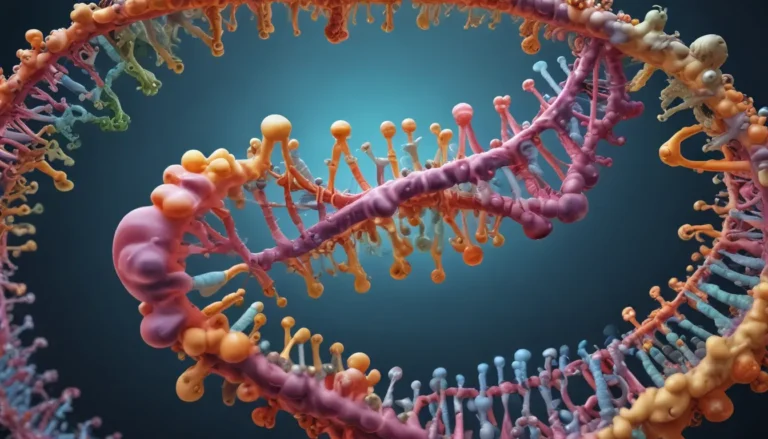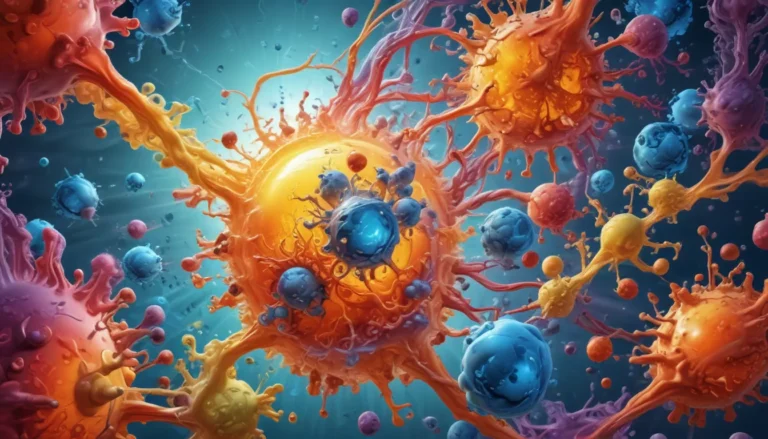A Note About Images: The images used in our articles are for illustration purposes only and may not exactly match the content. They are meant to engage readers, but the text should be relied upon for accurate information.
Genetics is a fascinating field that holds the key to understanding the complexities of inheritance and genetic diversity. At the core of genetic inheritance are alleles, variations of genes that play a critical role in shaping an organism’s traits and characteristics. Among these alleles, dominant alleles stand out for their ability to determine visible traits and influence the phenotype of an individual.
In this insightful and educational article, we will embark on a journey into the realm of dominant alleles, unraveling some surprising and lesser-known facts about their functions and implications. From their impact on inherited disorders to their role in evolutionary processes, dominant alleles play a crucial role in shaping the living world around us. By exploring the intricacies of dominant alleles, we can gain a deeper appreciation for the intricate mechanisms of genetics and their profound impact on biological systems.
Dominant Alleles: Unveiling Their Power and Influence
Key Takeaways:
- Dominant alleles play a vital role in determining visible traits and can mask the effects of recessive alleles.
- Understanding dominant alleles is essential in genetics, aiding in predicting traits in offspring and unraveling the complexities of genetic disorders.
Dominant Alleles: The Architects of Visible Traits
One of the fundamental aspects of dominant alleles is their role in determining the visible traits of an organism. These alleles are expressed even if an individual carries only one copy of the dominant allele. This expression of dominant alleles leads to the manifestation of specific traits that define an organism’s physical characteristics.
Masking the Effects of Recessive Alleles
Dominant alleles possess the unique ability to mask the effects of recessive alleles. In cases where an individual carries both a dominant and a recessive allele for a particular trait, the dominant allele takes precedence and governs the observable trait. This phenomenon highlights the dominance of certain alleles in shaping an organism’s phenotype.
The Duality of Dominant Alleles: From Desirable Traits to Genetic Disorders
While dominant alleles are often associated with the expression of desirable traits, it is essential to recognize that some dominant alleles can also be responsible for genetic disorders. One striking example is Huntington’s disease, a neurodegenerative disorder caused by the presence of a dominant allele. This dual nature of dominant alleles underscores the complexity of genetic inheritance and its implications for human health.
The Language of Genetics: Uppercase Representation of Dominant Alleles
In the realm of scientific notation, dominant alleles are typically represented by uppercase letters, distinguishing them from recessive alleles, which are denoted by lowercase letters. This standardized notation enables clear and consistent identification of different alleles, facilitating precise genetic analysis and communication within the scientific community.
Delving Deeper into the World of Dominant Alleles
Inheritance Dynamics: From Single to Dual Parental Contributions
Unlike recessive alleles that require both parents to transmit the allele for its expression, dominant alleles can be inherited from just one parent. This inheritance pattern implies that if either parent carries a dominant allele, there is a likelihood that the offspring will inherit the dominant allele. This mode of inheritance contributes to the prevalence of dominant alleles in populations.
Commonality in Diversity: The Pervasiveness of Dominant Alleles
Due to their unique ability to be expressed with just one copy, dominant alleles are often more common in populations compared to recessive alleles. This prevalence stems from the increased probability of dominant alleles being passed on from one generation to the next, shaping the genetic landscape of diverse organisms.
Individuality Amidst Commonality: Factors Influencing Dominant Allele Frequency
While dominant alleles, as a collective entity, may exhibit higher prevalence, the frequency of specific dominant alleles can vary based on multiple factors. Natural selection, genetic drift, and environmental pressures contribute to the distribution of dominant alleles within populations, reflecting the intricate interplay of genetic and environmental influences.
The Advantage of Balance: Heterozygous Advantage and Genetic Fitness
In certain scenarios, possessing a heterozygous genotype with one dominant allele and one recessive allele can confer an advantage to an organism. This phenomenon, known as heterozygous advantage, can enhance the organism’s fitness and survival in its environment, exemplifying the intricate balance of genetic diversity and adaptation.
Phenotypic Outcomes and Evolutionary Dynamics of Dominant Alleles
Evolutionary Emergence: The Role of Mutation in Generating New Dominant Alleles
The emergence of new dominant alleles is facilitated by mutations in the DNA sequence, leading to the development of alleles with selective advantages. If a mutation occurs in a gene’s coding region and results in an allele that confers a favorable trait, it may become a dominant allele within a population, driving evolutionary change and genetic diversity over time.
Genetic Interplay: Gene Interactions and Phenotypic Diversity
Dominant alleles interact with other genes to produce unique phenotypic outcomes, a phenomenon known as gene interactions or epistasis. These interactions play a pivotal role in shaping an organism’s traits and characteristics, highlighting the intricate genetic networks that underpin biological diversity and complexity.
The Significance of Dominant Alleles in Genetic Research and Beyond
Illuminating the Genetic Landscape: The Essentiality of Understanding Dominant Alleles
A comprehensive understanding of dominant alleles is indispensable in the field of genetics, enabling scientists to unravel inheritance patterns, predict trait inheritance in offspring, and decipher the genetic underpinnings of various disorders. By exploring the intricacies of dominant alleles, researchers gain valuable insights into the mechanisms of genetic inheritance and the implications for diverse biological systems.
Exploring the Future Horizons of Dominant Alleles
Unlocking New Avenues for Scientific Exploration and Innovation
As we continue to delve into the mysteries of dominant alleles, we open up new avenues for scientific exploration and innovation. The profound impact of dominant alleles on genetic diversity, disease susceptibility, and evolutionary dynamics underscores their significance in research fields ranging from medicine to agriculture. By harnessing the power of dominant alleles, scientists can pave the way for groundbreaking discoveries and transformative advancements in genetic research.
FAQs: Unveiling Common Questions About Dominant Alleles
- What are dominant alleles?
-
Dominant alleles are genetic variations that determine visible traits in an organism and can mask the effects of other alleles.
-
How do dominant alleles differ from recessive alleles?
-
Dominant alleles are expressed with just one copy, while recessive alleles require two copies for expression.
-
Can dominant alleles lead to genetic diseases?
-
Yes, some genetic diseases are caused by dominant alleles, such as Huntington’s disease.
-
Are all dominant alleles more common than recessive alleles?
-
The frequency of alleles varies in populations, and not all dominant alleles are more prevalent than recessive alleles.
-
Can dominant alleles change over time?
-
Yes, dominant alleles can change frequency through evolutionary processes like mutation and natural selection.
-
What is incomplete dominance?
-
Incomplete dominance occurs when neither allele is fully dominant, resulting in a blended phenotype.
-
Can two dominant alleles be present in the same gene?
-
Yes, co-dominance allows both alleles to be fully expressed, leading to a dual phenotypic manifestation.
-
Are dominant alleles always advantageous?
-
The advantage of an allele depends on the specific trait and environmental factors, and dominant alleles can have both positive and negative effects.
-
Do dominant alleles guarantee survival?
-
While dominant alleles may enhance survival chances, other factors impact an organism’s overall fitness and survival.
-
Can dominant alleles be influenced by mutations?
- Yes, genetic mutations can affect dominant alleles, altering their expression or function over time.
-
How do scientists study dominant alleles?
- Scientists use various methods like pedigree analysis, genetic testing, and molecular biology to analyze the presence and effects of dominant alleles in genetic systems.
Embracing the Diversity of Alleles: A Holistic Perspective on Genetic Inheritance
Genetic inheritance is a multifaceted journey encompassing the interplay of dominant and recessive alleles in shaping the traits and characteristics of organisms. While dominant alleles hold sway over visible traits and phenotypic outcomes, recessive alleles contribute their unique characteristics to the genetic landscape. By embracing the diversity of alleles, researchers and enthusiasts alike can gain a deeper appreciation for the intricate mechanisms of inheritance and the profound impact of genetic variations on living organisms.
With a blend of scientific rigor and exploratory curiosity, the study of dominant alleles unveils a world of possibilities in unraveling the mysteries of genetic inheritance and evolutionary dynamics. As we navigate through the complexities of dominant alleles, we embark on a transformative journey of scientific discovery and innovation, paving the way for a deeper understanding of the genetic blueprint that shapes life as we know it. Let us continue to explore, learn, and appreciate the wondrous world of dominant alleles and their remarkable influence on the tapestry of life.






